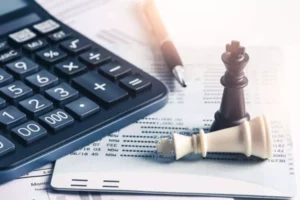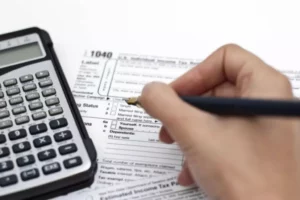Fixed assets depreciation
When buying fixed assets for a business, their cost must be properly taken into account. Fixed assets are assets that are purchased not for subsequent sale with profit, but for conducting business. The main purpose of a fixed asset is to bring economic profit.
Items involved in the manufacturing process within a company or enterprise are depreciated over time for a variety of different reasons. They are exposed to trivial wear and tear, become unusable due to damage sustained during an accident or natural disaster, become obsolete, put up for sale, or even act as a gift. All of this should be properly reflected in the accounting books.
Depreciation is a distribution of the amortized cost of long-term assets, other non-current and intangible assets during their operation (useful life) in a systematic way. The useful life is the expected period of time during which the non-current assets will be used by the enterprise or with their use the volume of products (work, services) expected by the enterprise will be manufactured (completed). In addition to standards and rules set by the IRS in regards to the useful life, the following factors are taken into account when determining the useful life period:
- the expected use of the asset, taking into account its capacity or performance;
- the expected physical wear and tear;
- obsolescence (due to technical progress or changes in demand for products or services);
- legal or other restrictions regarding the timing of its use (impossibility of further operation due to unsatisfactory technical condition, fire safety, etc.)
The amortized cost of fixed assets is the initial or revalued cost of fixed assets less their salvage value. The initial cost is the price that a business paid to acquire the asset. What about the salvage value? Let’s review this concept a little closer.
Salvage value
The cost of the accounting item subject to depreciation is computed as their initial (book) or revaluation cost less their salvage value. The salvage value is how much money or the value of anything else that the company expects to receive from the sale (liquidation) of non-current assets once they are no longer usable minus the costs associated with the sale (liquidation). It is also often known as the residual value.
The salvage value of an object is determined by the organization as the amount of possible income from the sale of this object or as a result of its liquidation after the expiration of the period of use. It is determined by the specialists at their discretion (based on theoretical knowledge and practical experience), taking into account the requirements of accounting standards.
It should be noted that from a practical point of view, the determination of the residual value is difficult since it is very difficult to foresee what the asset will cost in 10 years given the changing market conditions. When determining the residual value, it is also necessary to take into account the costs the organization will incur in association with the sale or liquidation of the fixed assets. If the salvage value is insignificant or does not cover the liquidation costs, then the residual value is considered to be zero.
It should not be surprising that at different enterprises the same fixed assets have different salvage values. An enterprise policy, for example, might include a quick update of the fixed assets. Then, the salvage value can be almost 50% of the initial value of the object because soon the company will sell the object and acquire a more modern, new, powerful one. Some businesses, for instance, often and diligently do equipment maintenance, so the increase in cost by the amount of repairs directly determines the salvage value of the repaired asset, which cannot be said about enterprises where the equipment is not well maintained or repaired only when out of order.
Example
Your pizza delivery business bought another car, which is one year old. You paid $16,700 for it. Businesses have two options when it comes to vehicle depreciation methods. This is a straight-line method where you deduct the same amounts each period and an accelerated method that allows you to get a larger depreciation expense in the first few years. Since the accelerated method is more complicated and cannot be applied to every case, we are going to use the first one. Let’s assume the annual depreciation rate is 18%.
Salvage Value = Original Price – (Depreciation x Number of Years)
When using this simple depreciation method, we get a very straightforward formula (shown above) that we can use to calculate the salvage value of our car. The depreciation amount we will use for the formula will equal $16,700 x 18% or $3,006. According to the IRS estimations, most cars have a useful life of five years. Let’s use that for our calculations. Keep in mind that one year of depreciation has been already written off, so we will need to enter four for the number of years. So, what do we have?
Salvage value = $16,700 – ($3,006 x 4)
Salvage value = $16,700 – $12,024
Salvage value = $4,676
Our calculations tell us that if we know how many years we expect the asset, in our case car, to last us and know which depreciation method and the rate we can apply, which is largely regulated by the IRS, then we can easily determine its salvage value.


















